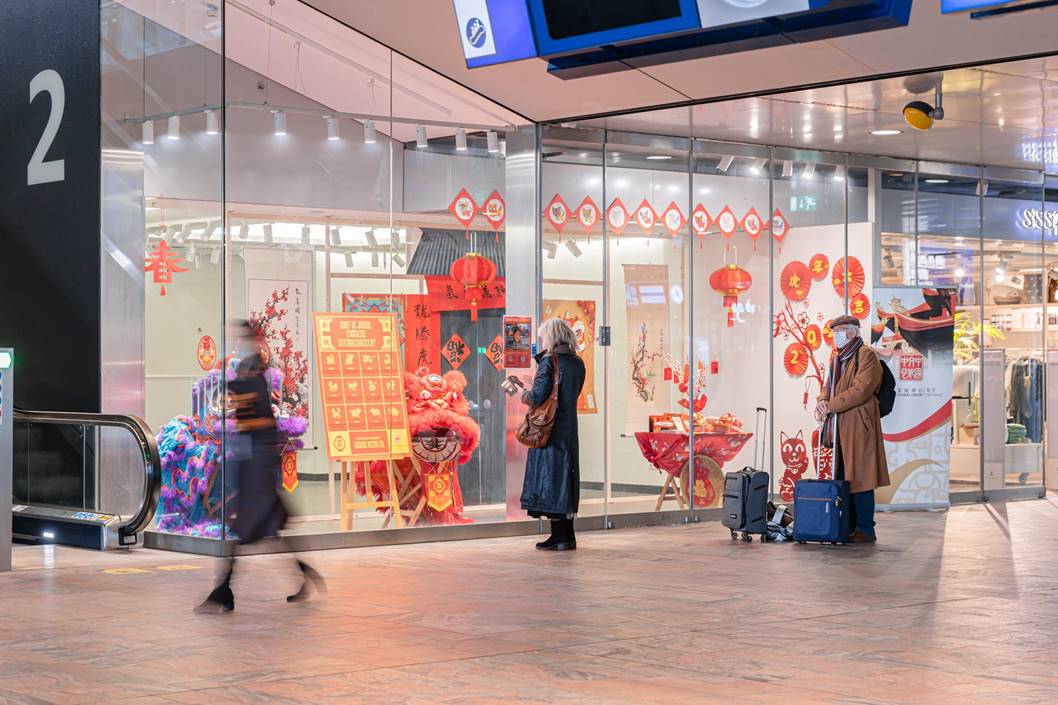




- BRNN
- BRI News
- BRNN News
- Database
Official Documents Polices and Regulations
Inter-government Documents International Cooperation BRI Countries
Business Guide Economic Data BRI Data
Trade
Investment Projects Latest projects
Cases - Content Pool
Recently, several events celebrating the Spring Festival, or Chinese New Year, were held in Rotterdam, the Netherlands. In Chinatown, local residents and Chinese expatriates came together to make paper snakes, paint fans, and stamp snake-shaped seals inside a tram. At the Rotterdam Central Station, Chinese artists taught the residents how to modify qipao, a traditional Chinese dress for women, and make golden lanterns.

Photo shows a pop-up window display with the theme of "Happy Spring Festival", featuring the design by Hu Fenmei, at Rotterdam Central Station in Rotterdam, the Netherlands. (Photo/China Cultural Center Den Haag)
Chinese artist Hu Fenmei is one of the organizers of these Chinese New Year celebrations. As a member of the Rotterdam Spring Festival Organizing Committee, Hu has been planning and organizing Chinese New Year activities for over 10 years. Every year, she invites Dutch cultural institutions and Chinese artists to collaborate on interactive projects.
Three decades ago, 9-year-old Hu and her parents left their hometown, Yuhu township in Wencheng county, Wenzhou city, east China's Zhejiang Province, and moved to the Netherlands. When she studied in the Amsterdam University of the Arts, she faced repeated setbacks in exploring painting themes and styles. As the only Chinese student in her class, she tried to imitate others' work to fit into the mainstream, but her teachers often commented that her paintings did not belong to any style.
After graduation, Hu was enlightened by Linda, the head of an art project she joined, who encouraged her to "embrace your Chinese roots." This advice inspired Hu to begin focusing on the stories of Chinese immigrants as the theme of her work. Her art depicts Chinese-owned restaurants in the Netherlands, the scenic landscapes of Yuhu in her memories, and abstract representations of the difficulty faced by younger generations of Chinese immigrants in gaining cultural and identity recognition.
"The Chinese Girl," a play produced by Hu and Linda, was performed during the "O. Festival for Opera. Music. Theatre." in 2009. Featuring the magical face-changing in Sichuan Opera, the show portrayed the growth of a Chinese girl and how she dealt with cultural conflicts. It was also performed in Utrecht and The Hague, where it was well-received.
Hu also collected old items from Chinese immigrants, capturing their journeys of pursuing dreams and gaining respect from the early 20th century to today. To showcase the stories behind these items, she organized an exhibition on Chinese immigrants in the Netherlands. Some scholars and experts who visited the exhibition reached out to her to delve deeper into the lives of Chinese immigrants throughout different periods.
Moreover, she established an art space called Space101 in Rotterdam's Chinatown to preserve the items. The space houses a large collection of publications about the Chinese community, available for public browsing. Many Chinese artists use the space to host workshops on paper-cutting, traditional Chinese tea art, and stained glass making.

Tel:86-10-65363107, 86-10-65368220, 86-10-65363106